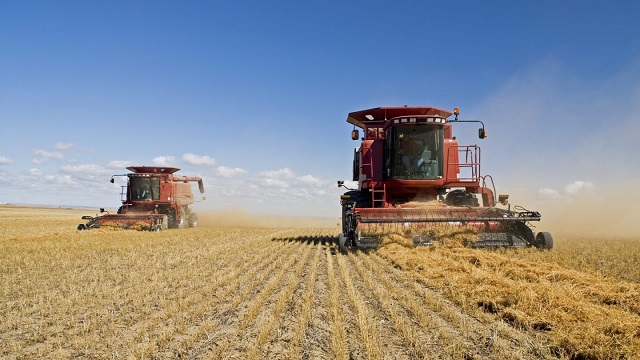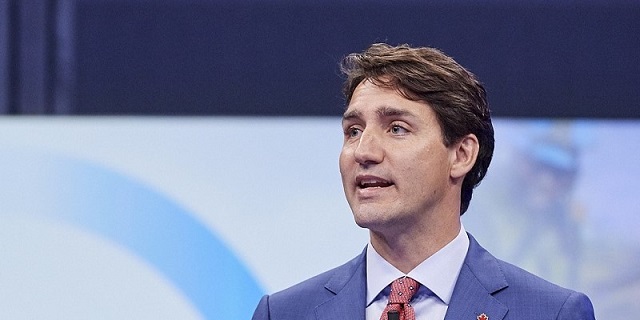Uncategorized
‘It doesn’t open’: Mosque survivors describe terror at door

WELLINGTON, New Zealand — When the gunman began to attack the Al Noor mosque, Ahmed Alayedy scrambled to get to the nearest emergency exit. He was the first one there.
“I tried to open the door,” he said. “But it doesn’t open.”
Alayedy and other survivors of the March 15 mosque attacks in New Zealand have described to The Associated Press a scene of confusion and terror at the door on one side of the main prayer room, in the first accounts of the role the door played.
Alayedy said so many people began crushing him against the door that some of his ribs cracked. Another survivor, Khaled Alnobani, says he thinks as many as 17 people may have died trying to get out through the door.
Investigators have likely examined a new electric locking system installed on the door in the days before the attack. The mosque says an electrician disabled that system the day before the attack, although some of those who escaped question whether that was the case. What is clear is that nobody managed to open the door that afternoon.
With the gunman in the middle of the room, the door represented the only escape route for those on one side of him, at least until people started smashing windows to get out.
Fifty people were slaughtered by the gunman at two Christchurch mosques during the attack, including 42 who died at Al Noor. Alayedy and others say that if the door had been wide open like it typically was during Friday prayers, many more people might have escaped.
Shagaf Khan, the president of the Muslim Association of Canterbury which oversees the mosque, said the door was closed and latched much like the front door of a house. He said it wasn’t locked, although worshippers may have believed it was in the confusion.
He said an electrician had tested the new electric locking system on Thursday, and then disengaged it for Friday prayers. He said that to open the door, somebody needed to turn a lever. It was just happenstance, and perhaps the cool weather that day, he said, which meant the door wasn’t wide open as usual.
“On any other Friday, the door would be open,” he said. “But on this Friday, nobody opened that door.”
He said he agreed that more people would have escaped if the door had been open.
“If it had been completely open, it would have been easy for people to get out,” he said. “But nobody was prepared for this. We were prepared for an emergency like a fire or an earthquake, and people would still have time to get out. This is something totally different. You don’t put this in your emergency plan.”
Alayedy said that in the confusion, he can’t be sure if he simply failed to turn the lever properly or if something else stopped the door from opening.
Alnobani, said he, too, tried to open the door and it didn’t work, and he’s familiar with the lever. He said he believes the door was electronically locked. Simply pushing a button next to the door would have unlocked it, he said, but nobody knew about the new system.
Khan said the mosque was in compliance with regulations, which require emergency exits to be clear from objects, easily accessible, and unlocked.
Police said the scene examination is part of their investigation and they will not be commenting while the investigation is ongoing.
Robert Wright, the Christchurch City Council head of building consents, said in an email the mosque was in compliance with the Building Act at the time of the attacks and had a valid certificate known as a “Building Warrant of Fitness.”
Alayedy, 30, said that on the day of the attack, he’d been listening to a holy speech by imam Gamal Fouda when he heard six or seven shots. He thought it was an electrical fault at first but then heard screaming and ran for the door.
“All the brothers come in behind each other, on top of each other,” he said.
Because he couldn’t open the door, he said, he tried punching the hexagonal piece of glass in the lower part of the door. When that didn’t work, he drove his knee through it, shattering the glass, and then kicked it out. He crawled through and ran for safety.
Alayedy, a chef from Jordan who moved to New Zealand nine years ago, said he thought about his family back at their house as he ran. His pregnant wife, his 3-year-old son, and the baby daughter they hope to have within the next couple of weeks.
Behind the mosque, Alayedy said, he began helping people to escape over a fence but couldn’t get over it himself because of his injured ribs.
Another survivor provided a second escape route near the door by diving through a window with his arm wrapped around his eyes. Tarik Chenafa said he heard a tat-tat-tat-tat-tat and knew right away it was a semi-automatic weapon from his two years of compulsory military training in the Algerian army.
“I know someone is coming to kill us,” he said.
Alnobani said that when he first came to the mosque that Friday, he’d noticed the side door was shut and considered opening it but then saw there were some older worshippers. It was a little cold and windy outside, he figured, so he left it alone.
Alnobani said he also managed to crawl through the door’s smashed glass and run. He returned to help rescue a young boy whose father was shoving him through the opening, he said, and then helped the father as well.
“I tried to save the child, and I thought maybe I lose my life,” he said. “But I am just alone,” he said, adding “He had more than me to lose.”
When he tried to help a third person through the opening, Alnobani said, that man was shot. The gunman walked out of the mosque to get another gun from his car, Alnobani said, and began shooting at him when he returned. But he managed to escape, and then drove two injured people to the hospital.
The gunman acted quickly, mowing down people on both sides of the mosque. On the side opposite from the closed door, some worshippers were able to escape, but the gunman also killed many others as they tried to leave.
“And he was actually standing behind them, and he was shooting and shooting and shooting and shooting,” Fouda, the imam, told the AP after the attack. “Tragedy. Tragedy.”
Brenton Tarrant, a 28-year-old Australian, has been charged with murder in the attack. His next court appearance is scheduled for April 5.
Chenafa said he’s still sad and confused, and finds it hard to sleep. And he doesn’t know what to believe about the door.
“There will be a lot of waiting to find out the truth,” he said.
Nick Perry, The Associated Press
Uncategorized
RCMP recruitment failure has Alberta advocacy group calling for Provincial Police Service

News release from Free Alberta Strategy (A Strong And Sovereign Alberta Within Canada)
“Make no mistake, we are paying for these services that we aren’t receiving. Alberta’s taxpayers are paying tens of millions of dollars for nearly 400 vacant RCMP officer positions – for boots that are not on the ground.”
A recent report from the Royal Canadian Mounted Police (RCMP)’s independent Management Advisory Board had findings that are nothing short of alarming:
“Federal policing has now arrived at a critical juncture of its sustainability, which present risks for the national security and safety of Canada, its people, and its interests,” says the report.
After over a year of diligent study, the Board has been tirelessly firing off flares, signalling to all who will listen: the very foundation of our national public safety apparatus may be at risk of faltering.
This is doubly problematic because, as you well know, the RCMP is also responsible for boots-on-the-ground policing in large parts of the country, including many rural and remote areas – including in Alberta.
Rural crime has been a longstanding issue in Alberta, and social disorder continues to make headlines nightly.
Alberta Minister of Public Safety, Mike Ellis, took to social media platform X (formerly known as Twitter) to express his opinion:
“The independent report finds the RCMP has struggled in recent years to recruit and retain regular members, a problem that’s particularly acute in federal policing. This is not about the hard-working men and women on the frontline: they are doing everything they can. The reality is the RCMP do not have enough officers to police communities in Canada effectively.”
Ellis has been ahead of this story for months now.
In March, Ellis stated that:
“… on average, Alberta has an RCMP officer vacancy rate of 20 per cent. This means that Alberta is only being served by 1,522 of the 1,911 RCMP officers that the federal government has authorized for Alberta.”
“Make no mistake, we are paying for these services that we aren’t receiving. Alberta’s taxpayers are paying tens of millions of dollars for nearly 400 vacant RCMP officer positions – for boots that are not on the ground.”
The consequences of this capacity crisis are far-reaching.
Not only does it jeopardize the safety of Albertans, but it also undermines the credibility of Canada’s federal police force on the international stage.
With limited resources and personnel, the RCMP’s ability to address pressing national and global security concerns is severely compromised.
The Management Advisory Board, created in 2019 by the federal government to provide external advice to the RCMP commissioner, set up a task force in the fall of 2022 to study the federal policing program.
Overall, the report says budget and personnel shortfalls have left the RCMP “operationally limited,” restricting the number of cases it can take on annually.
Here are some more highlights from the report:
“Canada and its people have already begun to see the repercussions of the federal policing program being stretched thin.”
“Federal policing’s overall eroding capacity may have implications for the credibility of Canada’s federal police force and its investigations on the international stage.”
“Ultimately, this may influence Canada’s overall approach and standing in international politics, including its ability to advance global priorities.”
Clearly, we cannot afford to wait any longer.
Municipalities can ease the burden on our national security services by establishing municipal policing.
Several cities in Alberta already have their own police authorities, and the provincial government is providing funding for others interested in exploring this option.
Grande Prairie is already in the process of establishing their own municipal police service.
No word on how many other municipalities have taken the government up on their offer.
Unfortunately, President of Alberta Municipalities Tyler Gandam (also Mayor of Wetaskiwin) is featured prominently on the National Police Federation’s “Keep Alberta RCMP” website.
Interestingly, the Keep Alberta RCMP website doesn’t mention the fact that the advisory board even exists.
It doesn’t mention the report.
The notion that our federal policing infrastructure teeters on the brink of instability while Gandam appears to be asleep at the wheel, is deeply disconcerting.
The safety and security of Albertans must remain our top priority.
We cannot afford to wait any longer.
The time has come for the province to take swift and decisive measures to bolster policing capabilities in Alberta.
It’s time for Alberta to seriously consider the establishment of an Alberta Provincial Police Service.
It has been one of the core tenets of the Free Alberta Strategy.
If you agree, please reach out to your municipality and ask them to take steps to protect your community.
Together, we can keep Alberta safe.
Regards,
The Free Alberta Strategy Team
P.S. We’re hoping you’ll consider contributing to our cause. Your generous donation helps us make a positive impact in our community. No need to worry about any hold-ups or threats here. We’re just passionate about making a difference, and your support goes a long way in helping us achieve our goals.
Uncategorized
Making Alberta a geothermal energy leader

Eavor announces it’s the #1 geothermal energy startup company in the world – January 2024
Alberta is creating Canada’s first geothermal test site to advance drilling innovation, reduce emissions and create jobs.
Geothermal energy uses naturally occurring heat within the earth to heat water and buildings and generate power, with few emissions or environmental impacts. Alberta has vast pockets of heat below ground, making the province Canada’s geothermal leader, but testing and developing new technologies can be a barrier for many companies. Unlike the United States, Japan and other countries, Canada does not currently have an open-access test site to help spur innovation.
Alberta is taking the first steps to create a new Alberta Drilling Accelerator. This groundbreaking facility would be the first of its kind in Canada, establishing Alberta as a global hub for geothermal technology. This will drive new innovations in geothermal and other clean energy projects that can reduce emissions and power communities around the world.
To kick-start the project, the Alberta government is investing $750,000 to conduct a feasibility study led by Calgary-based Eavor Technologies and other stakeholders. The study is the first step in assessing the proposed facility. It will include identifying a site, business planning, research on the governance model, an economic impact analysis and stakeholder engagement that will lay the groundwork for the initial planning stages of the project.
“Alberta has been a global energy leader for more than a century, renowned for our skilled workforce, innovation and one of the largest oil and gas reserves on the planet. The proposed Alberta Drilling Accelerator presents enormous potential to help our province lead the next wave of energy projects here at home and around the world that reduce emissions, create jobs and enhance energy security.”
The Alberta Drilling Accelerator would help companies test out and develop new geothermal drilling techniques or technologies to reduce emissions and drive growth across the clean energy sector. It would be an open-access, technology-agnostic drilling test facility capable of drilling in challenging environments, including deep depths, high temperatures and different rock types.
The accelerator also would help speed up the development of carbon capture, utilization and storage; helium; critical minerals; and other clean technologies and commodities that rely on Alberta’s drilling sector. All of this helps attract investment and bring new technologies to scale in Canada.
“With cumulative geothermal investment poised to reach $1 trillion by 2050, a geothermal arms race is very much underway to commercialize novel drilling techniques that accelerate geothermal development – exhibited by testing facilities in the United States, China and Iceland. As Canada’s first geothermal test bed, the Alberta Drilling Accelerator will help bring geothermal technologies to scale, supporting companies like Eavor. We commend the Government of Alberta for this bold initiative.”
“We are proud to witness Eavor, a CDL-Rockies alumni company, create new opportunities for innovators like themselves to advance the adoption of energy transition technologies like geothermal. The Alberta Drilling Accelerator will further solidify Alberta’s position as a leader in the global sustainable energy landscape.”
If the feasibility study shows the facility is economically and environmentally viable, and if the project is approved by the Alberta government, the facility will start taking shape at the selected site and drilling could start as early as 2025.
“Canada is home to the most advanced drilling technology in the world. Not only do our members support the responsible development of oil and gas, but we are integral in the extraction of new energy resources like geothermal and critical minerals. Our workers are at the epicentre of Canada’s energy transformation. Our people, technology and processes are leading the way towards a more diverse energy future. The Alberta Drilling Accelerator is a government-enabled policy approach to expand Alberta’s drilling capacity and reach its full potential as the world’s most diverse and technologically advanced producer and exporter of sustainable energy and critical minerals.”
“The Alberta Drilling Accelerator is a testament to Alberta’s innovative and entrepreneurial spirit. Leveraging our oil and gas sector expertise, Alberta is poised to become the global leader in developing new geothermal technologies that will play an integral role in reducing emissions while supporting job creation.”
Quick facts
- The Canadian Association of Energy Contractors estimates that one active drilling rig, whether drilling for natural gas or geothermal, creates approximately 220 direct and indirect jobs and
$1 million in tax revenue. - In 2019, Eavor received $2 million in provincial funding through Emissions Reduction Alberta and Alberta Innovates for the world’s first closed-loop geothermal system.
Related information
-

 COVID-192 days ago
COVID-192 days agoCOVID Lab Leak: Over four later, EcoHealth Alliance funding is finally suspended
-
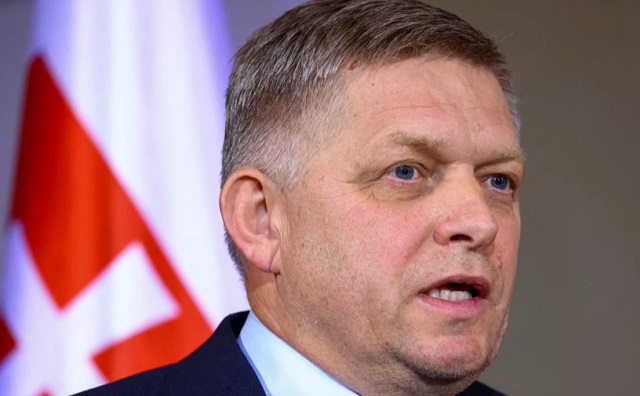
 Crime2 days ago
Crime2 days agoSlovakian prime minister who opposed WHO Pandemic Treaty shot in assassination attempt
-
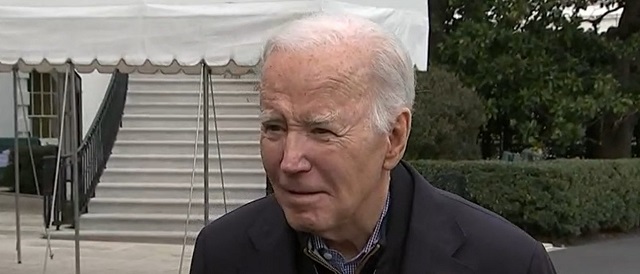
 Censorship Industrial Complex2 days ago
Censorship Industrial Complex2 days agoJim Jordan Exposes Biden’s Censorship-Industrial Complex
-

 conflict2 days ago
conflict2 days agoWhite House Reportedly Worried About Russia’s Sudden Momentum Months After Biden Declared Putin ‘Already Lost’ War
-

 Business2 days ago
Business2 days agoESG Puppeteers
-

 COVID-191 day ago
COVID-191 day agoNIH Quietly Altered Definition For Gain-Of-Function Research On Its Website, Former Fauci Aide Confirms
-

 Energy14 hours ago
Energy14 hours agoNew Report Reveals Just How Energy Rich America Really Is
-
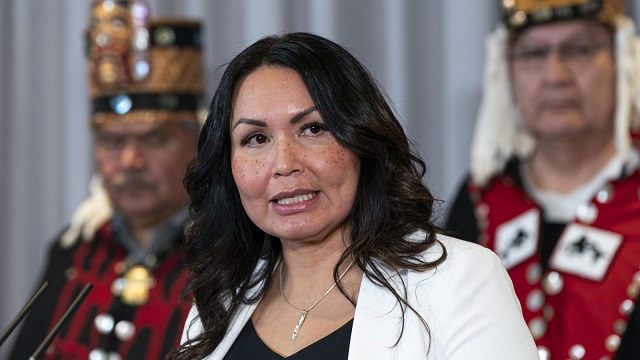
 Energy2 days ago
Energy2 days agoLNG leader: Haisla Nation Chief Councillor Crystal Smith on the world’s first Indigenous project



